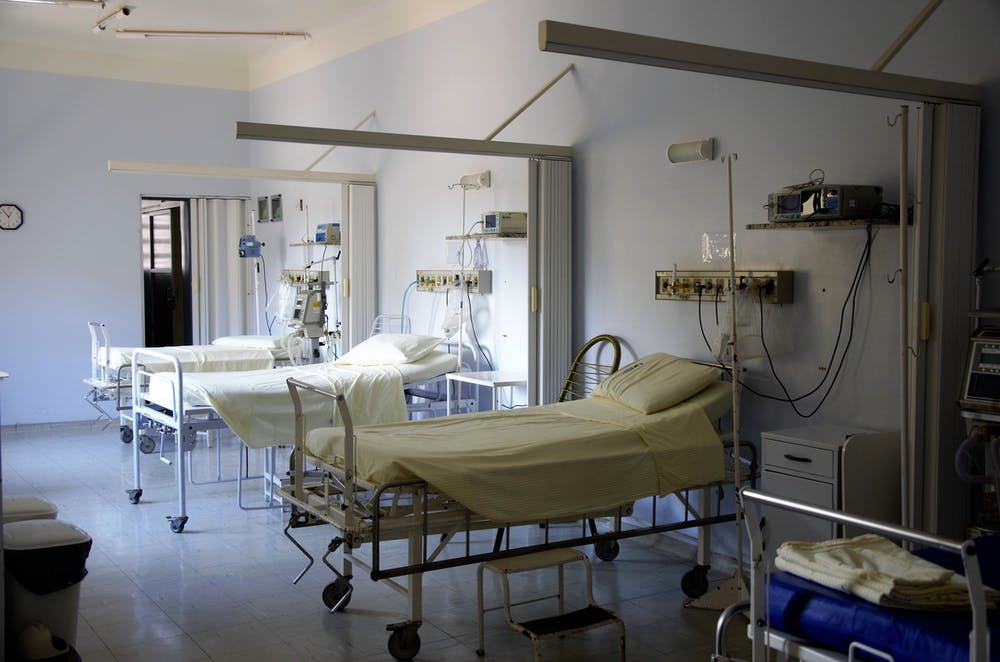


New guidelines to help address “concern” around the prevalence of pressure ulcers in local health settings have been released to assist care providers across the island.
Pressure sores are damage to the skin that comes from sustained pressure, and can be present as intact skin or an open injury, with the most serious cases resulting in full tissue loss, and potentially bone, tendon or muscle being exposed.
The Health Department's recently-released performance report showed that, in the year to June 2021, there were 11 incidents involving pressure ulcers of the most serious kind (Category 3/4), and 84 in Category 2.
The Island-wide Pressure Ulcer Prevention and Management Framework - drawn up with input from Jersey Hospice, Family Nursing and Home Care and the Jersey Federation - is described as a “standardised” approach for pressure ulcer care, with an audit in place for each organisation using it to make sure they are complying.
The July 2021 policy, which has now been shared by the Government with Express, explains that "despite raising public and professional awareness through national and local initiatives, prevalence [of pressure ulcers] remains a concern."

Pictured: The new framework covers healthcare across the island.
It notes that NHS Improvement "have recognised that systems used to monitor and report pressure ulcers at local, regional and national levels are not standardised and as a result issued the revised definition and measurement document for pressure ulcers in 2018."
It is this 2018 document that the island's new pressure ulcer framework is modelled on, giving 'care bundle' forms to use to assess the nature of ulcers, as well as guidance on more personalised care.
The report outlines how risk assessment for patients considered at risk should be:
There should also be a reassessment if there is a change in the patients' condition or skin is noticed, a person is transferred to another care setting or a person is transferred to another clinical ward.
In terms of treatment, it places emphasis on creating a 'Person-Centred Care Plan' agreed with the patient, taking into account the outcome of the risk assessment, treatment plans, skin cleansing and maintenance regimes, and management of other risks or contributing factors.

Pictured: Pressure ulcers come from sustained pressure, and can be caused both externally and internally.
It states that "people with an identified pressure ulcer(s) will receive a person-centred assessment, a categorisation of the pressure ulcer(s), comprehensive wound assessment and an individualised care plan.
The policy adds that "where a care plan has not been implemented or followed, there should be documented explanation in their record and the reason care has not been delivered."
On this note, it emphasises that a person must give "valid consent" if they have full capacity to, and that it must be documented following "spend[ing] time with the person, examining their views, whist given them appropriate information about the foreseeable consequences of deciding one way, or another or not deciding to take treatment at all."
The new policy outlines how all care settings "should provide a basic level of equipment for the prevention of pressure ulcers for individuals, with the exception of custom-made items.
"This includes; pressure redistributing cushions, heel and joint protectors and pressure redistributing mattresses. Maintenance of equipment is the responsibility of the care setting and should be carried out according to manufacturer's guidelines."
The standardisation spreads to dressing too, with a 'Dressing Formulary' created to promote a select set of dressings used island-wide.
In terms of reporting incidents, it specifies that all should be reported on the individual's record, but pressure ulcers Category 2 and above, including suspected Deep Tissue Injury and unstageable pressure ulcers, should be reported into the organisation reporting system.
In addition, any care settings that are registered with the Jersey Care Commission are said to have a statutory duty to notify the Commission of any pressure ulcers in Category 2 and above.
In cases where there is a risk of neglect, the document also outlines the proper pathway through the Safeguarding Adults Team, which would include a conversation with the patient or their representative if they don't have the capacity.
Comments
Comments on this story express the views of the commentator only, not Bailiwick Publishing. We are unable to guarantee the accuracy of any of those comments.